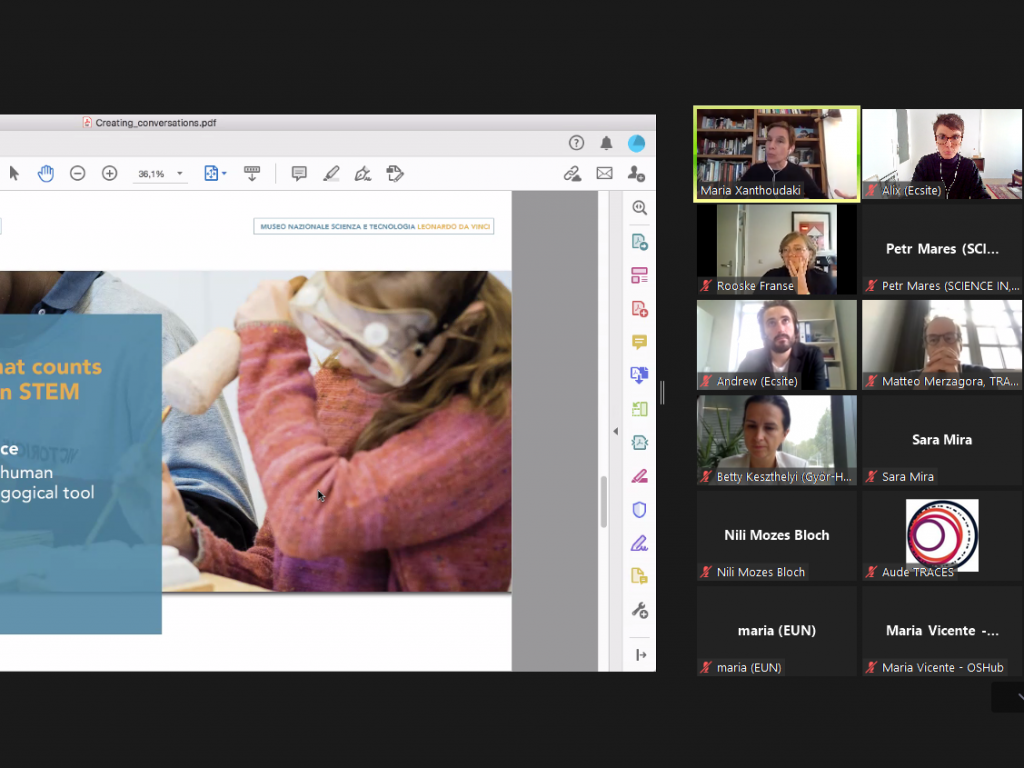We, the EU-funded projects on Open Schooling, are all testing different approaches to science education, and therefore, are exploring new ideas for materials, tools and how they can be used for learning. As external speaker, Maria Xanthoudaki, the director of education at the National museum of science and technology in Milano reminded us, we are aiming to go beyond close-ended learning and towards open-ended learning where learners can solve problems with many solutions or even create problems themselves. So how do we do that?
First, we should always keep at the centre of our reflections and explorations the powerful words of Edith Ackermann when it comes to learning materials, “we should address learning materials and tools in a way that they are open enough to let you in, intriguing enough to capture your imagination, safe enough to let you enact otherwise risky ideas and generous enough to always give you a second chance.”
Then, we could be inspired by the different considerations Maria Xanthoudaki and her team keep in mind when designing learning materials and tools:
- Broadening what counts in and as learning: in other words, asking ourselves what counts both for the learners’ experience and for us as learning experience designers
- Creating a conversation with the material. Beyond the hands-on approach, the museum aims to develop a continuous dialogue between the mind, the eye, the hands and the materials to develop intelligent hands and playful minds.
- Promoting creative exploration through the concept of bricolage, a process of iterative reflection to explore different designs and configurations.
For Maria Xanthoudaki, it is the learners’ subjectivity, sense of aesthetics, and interests that are the foundational elements of curiosity, imagination and inspiration when exploring creatively the materials and the learning experiences. And therefore, this could or should be at the centre of your attention when designing tools and materials supporting students and teachers testing new or different approaches in science learning.
Beyond the content, the way the tools are designed is also essential. Eti Oron, Head of content development at the Bloomfield Science Museum of Jerusalem involved in the Make it Open project and Matteo Merzagora, Director of Traces, involved in Schools As Living Labs presented 2 different tools supporting teachers in their Open Schooling journey. These two very different tools faced the same challenges:
- How can one tool help schools develop the same kind of activities, whilst making it still relevant for their own community?
- What can the tool provide to educators who are already extremely experienced partners?
Both projects adopted a co-creation process to tackle these challenges. Make it Open co-created their Learning Scenarios with 8 schools and continues to closely work with teachers to improve and adapt the tool for different cultural contexts, students’ ages and time. Schools As Living Labs organised co-creation workshops within its consortium, gathering formal and non-formal education professionals to produce its roadmap for teachers. These workshops have been designed to be both training and co-creation opportunities for the partners involved in the project.
These tools are currently in their testing and evaluating phases and will soon be used at a larger scale in Europe. They may not be our only answer to transforming school systems into a collaborative system, connected to its local community and the center of community well-being, but they are part of it to some extent.

